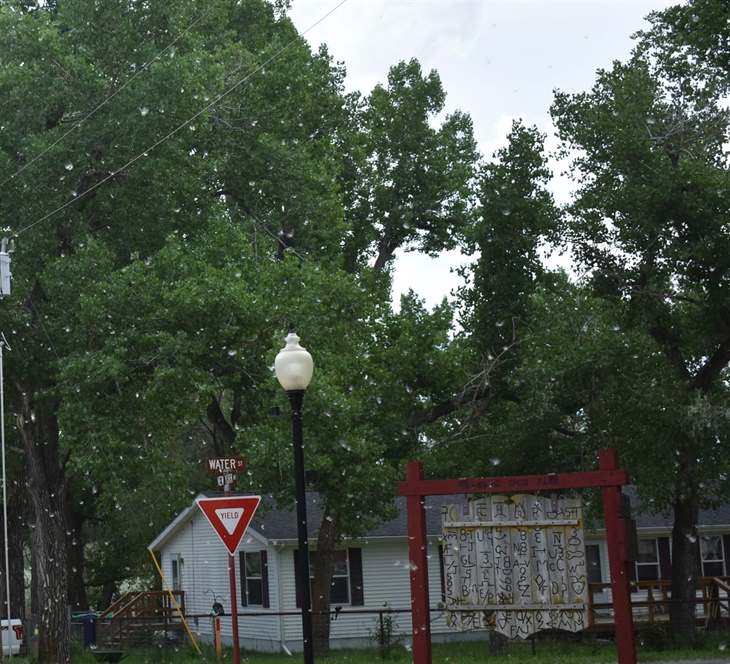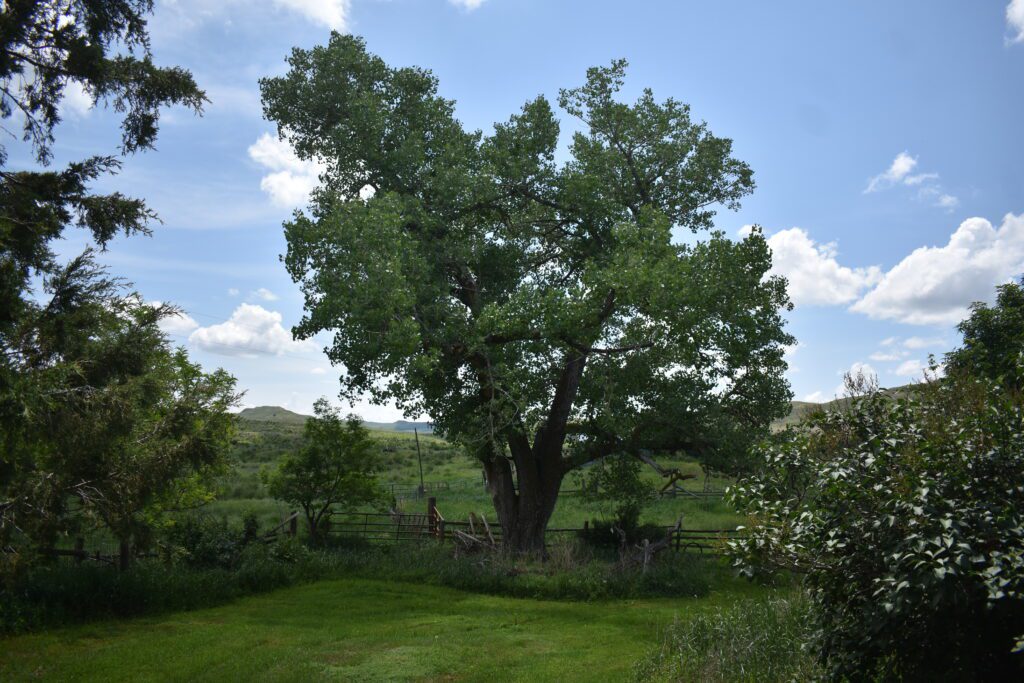News
Summer Snow, Cottonwood Cotton in the Air

Its summer snow time wherever cottonwoods grow. June is the time when cottonwood trees send their seeds on a journey on the wind to find a place to grow. The actual seed is about pinhead size, attached to a soft, fuzzy cotton that blows in the wind, and can be carried five miles or more depending on the wind.
The cottonwood is a fast-growing tree that grows naturally along streams and water sources. Once the seed finds the ideal condition to grow, it quickly turns into a seedling, and then within a few years becomes a stately tree. It is also the Wyoming State Tree.

The cottonwood is native to the Rocky Mountain region. It can live between 50 and 100 years and grow as tall as 100 feet in the air. The cottonwood is sacred to many Native American tribes. They used the cottonwood for lodgpoles, firewood and as the center pole for the Sundance Ceremony. It is said the cottonwood leaf is in the shape of the teepee as well.
The cottonwood that was the inspiration for Wyoming’s state tree was a huge tree on a ranch near Thermopolis. It was from 50-55 feet tall, and the trunk measured 29 feet around. The cottonwood became the official state tree in 1947. At the time it was thought to be the largest cottonwood in the world. It was considered to be the largest one in the United States until it burned down after being hit by lightning in 1955.
Other aspects of the tree made the cottonwood such a desirable selection to represent the state. As stated in the House Bill No. 15, the trees also provide comfort and beauty to humans and shelter and shade to livestock. The cottonwood tree was also described in the bill as to have provided these services since time immemorial.

The cottonwood is not found naturally on dry soils, but the early settlers planted it extensively around their homesteads and it has proven to be relatively drought resistant.
Due to the fact that the drifting cotton was often unpopular with homeowners and urban grounds keepers, as that it piles up on lawns, in gardens, in some towns they do not allow the female trees, which produce the cotton, calling them a public nuisance.
From the Bridger Valley Enterprise, May 20, 1913 – Cutting out the Cottonwoods – In many cities of the Southwest, the cottonwood trees have become a nuisance by reason of the litter which they make at certain seasons of the year when the little wad of cotton are dropped from them and matter is being met by the wholesale cutting down of these trees. Thousands of these beautiful shade trees are being sacrificed.

As early as 1907 the Wyoming Tribune (Cheyenne), on April 30, had this article. Cottonless Cottonwoods – Tree Committee to Plant Unique Trees at Park Near Upper Lake. The city tree committee last evening received from Wheatland a shipment of 100 cottonwood trees which, are to be planted in the park now being created between L.akes Maupalutah and Absaraka.
The trees received are horticulture freaks inasmuch as that they are cottonless cottonwoods. The ordinary western cottonwood tree each spring sheds what is commonly known as “cotton” in such quantities that the ground is frequently covered like a mantle of snow. The trees received do not produce cotton and as a result are for more desirable than the common cottonwoods to be found all over the city.
As early as 1881, people sold trees for windbreaks and other plantings, as in this ad.

Laramie Sentinel, April 23, 1881
In The Laramie Republican May 28, 1919 it talks about the age of some cottonwoods there. Cottonwood Trees Half-Century Old – Hon. N. K. Boswell says that some of the trees along north Second street, fronting the residence of Mrs. Caira Simpson, and at the old Edward Dickinson place, were planted fifty years ago this month. They were brought from Ogden by Luther Fillmore, the father of Mrs. M.C. Brown of this city, while he was general superintendent of the Union Pacific, after he had attended the driving of the golden spike at Promontory, m his official car, and were planted. These, as far as Mr. Boswell knows, are now the oldest trees in the city. Perhaps the oldest tree was the one which stood until a few years ago in front of Carter’s Jewelry store, on Thornburg street, planted by the mother of Mrs. Downey and Mrs. Roach..

And this from the The Wyoming Industrial Journal, May 1, 1906 from a longer article about Sheridan talks about the large cottonwood trees.
A tract of 15 acres lying along Big Goose creek and adjacent to the principal residence portion of the city has been presented to the municipality for public park by Hon. John B. Kendrick, public spirited citizen. The tract is covered with large cottonwood trees and shrubbery of native growth, and the City Park Commission is now engaged in cleaning up this tract and beautifying it for public play ground

So, when you see the ‘summer snow’ remember that sometimes tiny packages contain huge rewards; and sometimes what seems like a nuisance can be a blessing in disguise. Like the tiny seed that becomes a large tree to provide shade and beauty to our yards and our cities.

